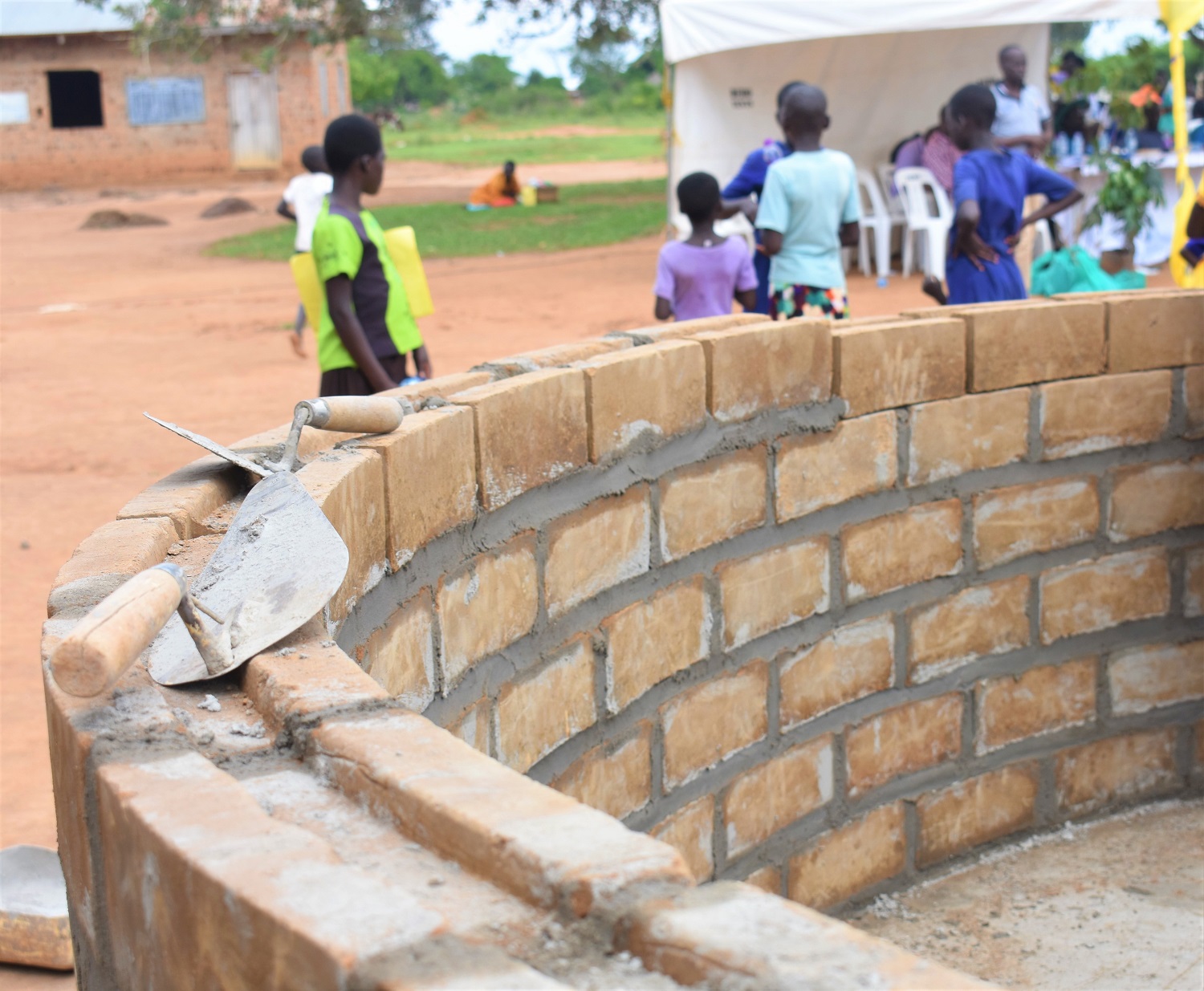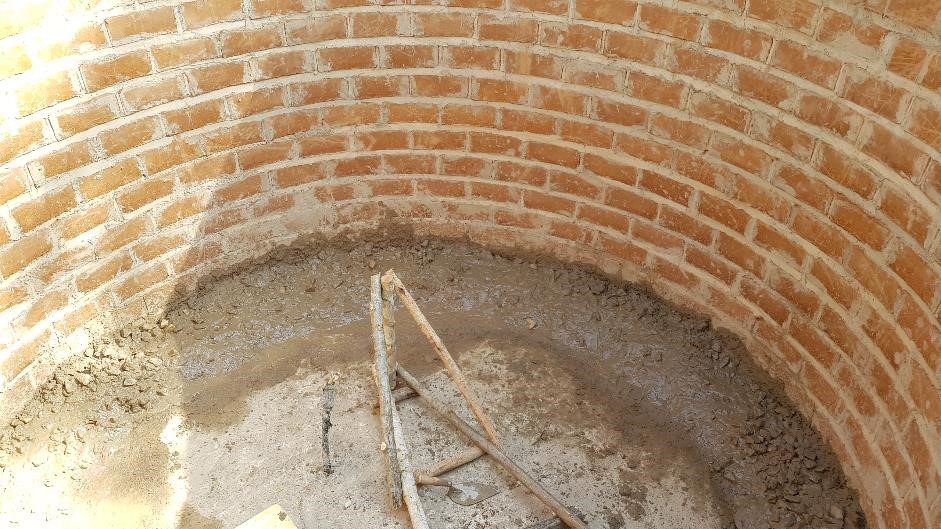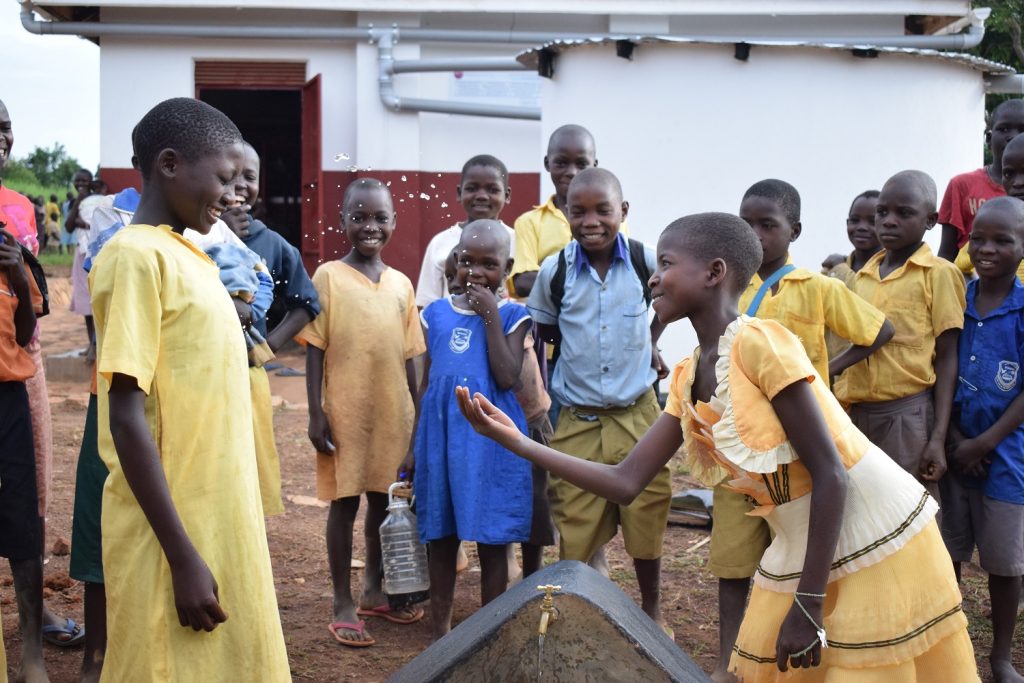In 2018 HYT built 33 ISSB water tanks in schools across Uganda, with a total capacity of 650,000 litres. Access to stored rainwater increase the time students spend learning in the classroom, by removing the need to fetch water from boreholes – an endeavour involving heavy jerrycans and multiple kilometre journeys.

Plastic water tanks
Most water tanks in Uganda are made of plastic, and although they are easy to install, they do suffer from some key flaws. The main issue with plastic tanks is their longevity, damage is easily done to the main body and is difficult and expensive to repair. Unfortunately most of the damage is caused by people vandalising the tanks, often using knives or screwdrivers to pierce the tank.

Another disadvantage with using plastic water tanks is the transport costs and associated environmental impact. The vehicles used to transport a tank to its destination will produce pollution and increase the carbon footprint of the tank.
ISSB water tanks

HYT builds water tanks out of ISSBs, this produces strong and durable structures. As the tanks are made from compressed blocks that are very difficult to pierce or damage, and can easily be repaired with some mortar. Additionally, since the blocks are produced on site, the transport costs are minimised, further reducing the environmental impact of tank construction.

A team of HYT masons can build two water tanks a month, with each tank taking a total of two weeks to complete.
As the water tanks are cylindrical, HYT uses curved blocks created with a different press. Construction begins with the foundation of the tank, this consists of a shallow circular trench in which a four-block high ring is built. This ring is then filled with concrete to form a flat base for the tank. At this stage a hose pipe is put through the base, this is used to filter out sediment which drifts to the base of the tank, ensuring the water provided is clean.

Now the main body of the tank is built. The main cylinder consists of 16 slightly smaller rings of blocks. Unlike regular ISSB buildings, water tanks require mortar between each of the blocks to ensure the tank is watertight.
Once the main body of the tank is completed, wire mesh is attached to the outside and inside of the cylinder. The purpose of this mesh is twofold: it increases the durability and strength of the blocks in addition to providing a surface for the plaster to adhere to. Next the inside of the tank is plastered with a mix of mortar and a waterproofing agent. Then small rocks and mortar are used to make a bowl-like shape in the base of the tank. This is done to reduce the pressure around the rim of the base, as the weight of water in a full tank is 20,000 kilograms.

At this point the tank is almost complete, a hole is drilled in the front to fit the tap and a roof is added and connected to gutters on the building. Finally the tank is plastered and painted, and the HYT masons will move onto their next project.

Keep up-to-date with HYT’s work by following us on Facebook, Twitter and Instagram.


